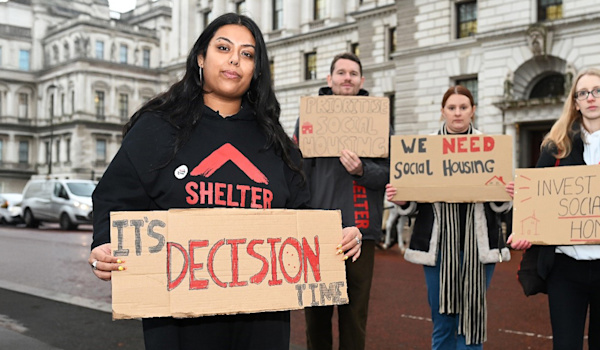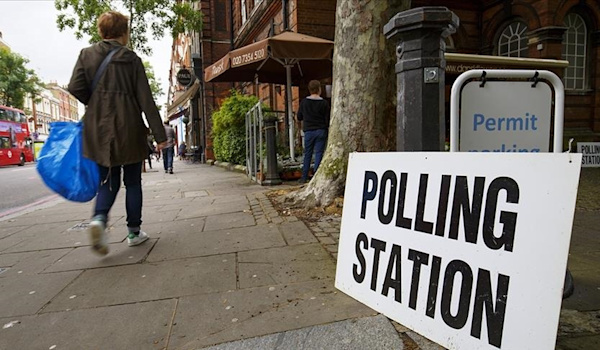We've summarised the main points of the report below.
Brick by Brick: A Plan To Deliver the Social Homes We Need
Building more social housing is the only way to end the housing emergency. This report sets out a plan for the government to deliver the 90,000 homes a year that this country needs.
There is a chronic shortage of social rent homes in England
In the last 10 years, we’ve seen a net loss of 260,000 social rent homes, including 11,700 homes lost last year alone.¹
Building more social rent homes is the only lasting solution to the housing emergency. These homes are genuinely affordable because they have rents linked to local income, secure tenancies, and any rent increases are more predictable than in the private rented sector.
There is now agreement across both the housing sector and the political divide that England needs at least 90,000 social rent homes built a year, for 10 years. This would be enough to house every homeless household and clear most social housing waiting lists.
This graph shows the decline in new social homes delivered since 2010.²

Ending the housing emergency is a smart investment
Yes really! The total benefit of building 90,000 homes is estimated to be as much as £51.2 billion over 30 years. The most direct lever that the government has to increase social housebuilding is grant funding through the Affordable Homes Programme (AHP). This is why we need:
a new, reformed 10-year Affordable Homes Programme focused on the delivery of social rent over other housing tenures
a change in fiscal rules³
a long-term rent settlement - giving social housing providers and tenants the confidence and security to plan for the future
The government's target of 1.5 million new homes per year, must include a social housing target which ramps up to 90,000 social homes a year in five years.
A six-point plan for how the new government can get there
In this report, Shelter proposes a comprehensive plan to get a mass-scale building programme off the ground.
Set a clear ambition
While we need more homes of all types, it’s not enough to increase the overall supply of private homes in the hope that benefits will ‘trickle down’. The government's target of 1.5 million homes a year will not improve affordability and existing conditions without a social housing target of 90,000 a year.
The government must stop relying on private developers to solve the housing emergency: a private developer will not build enough homes in an area to drive down prices, as it works in their favour to drip-feed homes onto the market to keep prices high enough to make a profit. England needs a clear ambition to end homelessness and house everyone on social housing waiting lists. Everything flows from this.
A new Affordable Homes Programme
The government’s most direct lever to increase social housebuilding is grant funding through the Affordable Homes Programme (AHP).
The government should deliver a new, reformed 10-year Affordable Homes Programme focusing most of the funding on social rent, devolving powers and making the application process easier - so councils and housing associations can get on with the job of building.
Unlock our land system
The cost of land is also a major barrier to social housebuilding and makes it impossible for councils to deliver genuinely affordable social homes directly. It also reduces the number of social and affordable homes delivered through the planning system. To help councils acquire land more cheaply, the government should:
support councils to use new rules to eliminate hope value through compulsory purchase powers
reform property taxes to fund social housing and improve equality
create a comprehensive and more transparent land register
change rules so that council-owned and public land is used for social rent rather than sold at the highest price
release the ‘grey belt’ to get more land ensuring councils capture the increase in land value by setting minimum levels of social rent homes.
Unblock our planning system
The land and planning system is broken. We need a planning system that incentivises building genuinely affordable social rent homes. The new government should ensure:
there’s a social housing target in every area based on these two needs: social housing waiting lists and levels of homelessness
councils have updated local plans that aim to end the housing emergency based on these two needs
developers are building the social homes they promise by ensuring local authorities have a ‘duty to require’ on-site delivery of at least 20% on large building sites
Boost council building
Direct delivery by councils has been the only way England has ever hit high housing targets. Fifty years ago (in 1974), councils directly delivered nearly 100,000 social rent homes.⁴ Following years of funding cuts, many councils were forced to shut down their building operations, transfer their council stock to housing associations or focus on building private homes for sale to balance their budgets.
Unleashing them again would help to build 34,000 social rented homes a year by 2030. There are a series of interventions that could help a council housebuilding renaissance:
local authorities need increased grant funding
local planning authorities need more capacity to review planning applications and fast-track the delivery of social homes
suspend the Right to Buy scheme
capacity and funding for in-house planning and housing delivery teams to get councils building
a new national land strategy
measures to unlock low-interest borrowing
a central government programme to support councils to pool resources and expertise, and to use their collective power to secure better deals in negotiations with suppliers.
support from Homes England to use new Compulsory Purchase Powers, and liability insurance backed by central government
Create new ways of delivering social homes
The government must use funding and policy interventions to get more long-term empty homes converted into social rent homes. They should also support Community Land Trusts to deliver the genuinely affordable homes their communities need and lay the groundwork for a new era of new towns with new measures to boost the Development Corporations.⁵
There must also be a focus on the link between the housing emergency and the climate emergency. Just as we must share the consequences of climate change, we should all share the benefits of better environmental policies, better-built homes, access to green space, new green technologies, and a just transition to net zero and growth.
For questions about the content of this report, email our Public Affairs team. For media enquiries, email our Media team.
Why do we need more social rent homes?
164,040 children stuck homeless in damaging temporary accommodation - up 15% in a year
1.3m households are on social housing waiting lists, forcing people into a broken private rented sector
Millions of families across England are living in poor conditions in some of the oldest housing stock in Europe. Homes are badly insulated and are riddled with damp and mould with many renters being forced to choose between feeding their families and paying ever-rising rents.
Our new government has promised a housebuilding revolution. Together, we must ensure that means social rent homes.
Will you help us campaign for investment in social housing?
Join our campaignFootnotes for Brick by Brick: A Plan To Deliver the Social Homes We Need
In 2022/23 there was a net loss of 11,710 social rented homes. Shelter analysis of Department for Levelling Up, Housing and Communities (DLUHC) data on sales, demolitions and conversions to other tenures. DLUHC, Live tables on social housing sales, Tables 684 and 678, accessed June 2024;
RSH, Private registered provider social housing stock and rents in England 2022 to 2023, Private registered providers additional tables, Table 3.13, accessed June 2024;
DLUHC, Local authority housing statistics, Section K, accessed June 2024.New social housing: DLHUC, Live tables on affordable housing supply, Table 1000, accessed June 2024.
Fiscal rules are limits or restrictions governments adopt to constrain their taxes and public spending decisions.
DLUHC, Live tables on housing supply: indicators of new supply, Table 244, accessed July 2024.
Development Corporations are statutory bodies set up to facilitate development in areas that need large-scale coordination of investment and planning.
More that may interest you

Let's build social housing


